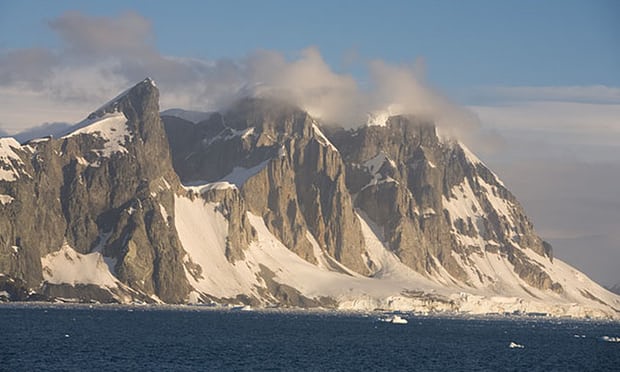Scientists discover 91 volcanoes below Antarctic ice sheet
Scientists have uncovered the largest volcanic region on Earth – two kilometres below the surface of the vast ice sheet that covers west Antarctica.
The project, by Edinburgh University researchers, has revealed almost 100 volcanoes – with the highest as tall as the Eiger, which stands at almost 4,000 metres in Switzerland.
Geologists say this huge region is likely to dwarf that of east Africa’s volcanic ridge, currently rated the densest concentration of volcanoes in the world.
And the activity of this range could have worrying consequences, they have warned. “If one of these volcanoes were to erupt it could further destabilise west Antarctica’s ice sheets,” said glacier expert Robert Bingham, one of the paper’s authors. “Anything that causes the melting of ice – which an eruption certainly would – is likely to speed up the flow of ice into the sea.
Advertisement
“The big question is: how active are these volcanoes? That is something we need to determine as quickly as possible.”
The Edinburgh volcano survey, reported in the Geological Society’sspecial publications series, involved studying the underside of the west Antarctica ice sheet for hidden peaks of basalt rock similar to those produced by the region’s other volcanoes. Their tips actually lie above the ice and have been spotted by polar explorers over the past century.
But how many lie below the ice? This question was originally asked by the team’s youngest member, Max Van Wyk de Vries, an undergraduate at the university’s school of geosciences and a self-confessed volcano fanatic. He set up the project with the help of Bingham. Their study involved analysing measurements made by previous surveys, which involved the use of ice-penetrating radar, carried either by planes or land vehicles, to survey strips of the west Antarctic ice.
The results were then compared with satellite and database records and geological information from other aerial surveys. “Essentially, we were looking for evidence of volcanic cones sticking up into the ice,” Bingham said.
After the team had collated the results, it reported a staggering 91 previously unknown volcanoes, adding to the 47 others that had been discovered over the previous century of exploring the region.
These newly discovered volcanoes range in height from 100 to 3,850 metres. All are covered in ice, which sometimes lies in layers that are more than 4km thick in the region. These active peaks are concentrated in a region known as the west Antarctic rift system, which stretches 3,500km from Antarctica’s Ross ice shelf to the Antarctic peninsula.
“We were amazed,” Bingham said. “We had not expected to find anything like that number. We have almost trebled the number of volcanoes known to exist in west Antarctica. We also suspect there are even more on the bed of the sea that lies under the Ross ice shelf, so that I think it is very likely this region will turn out to be the densest region of volcanoes in the world, greater even than east Africa, where mounts Nyiragongo, Kilimanjaro, Longonot and all the other active volcanoes are concentrated.”
The discovery is particularly important because the activity of these volcanoes could have crucial implications for the rest of the planet. If one erupts, it could further destabilise some of the region’s ice sheets, which have already been affected by global warming. Meltwater outflows into the Antarctic ocean could trigger sea level rises. “We just don’t know about how active these volcanoes have been in the past,” Bingham said.
However, he pointed to one alarming trend: “The most volcanism that is going in the world at present is in regions that have only recently lost their glacier covering – after the end of the last ice age. These places include Iceland and Alaska.
“Theory suggests that this is occurring because, without ice sheets on top of them, there is a release of pressure on the regions’ volcanoes and they become more active.”
And this could happen in west Antarctica, where significant warming in the region caused by climate change has begun to affect its ice sheets. If they are reduced significantly, this could release pressure on the volcanoes that lie below and lead to eruptions that could further destabilise the ice sheets and enhance sea level rises that are already affecting our oceans.

LOL, there goes the global warming theory , down the drain ;-)
Congratulations @babasikandar! You have completed some achievement on Steemit and have been rewarded with new badge(s) :
Click on any badge to view your own Board of Honor on SteemitBoard.
For more information about SteemitBoard, click here
If you no longer want to receive notifications, reply to this comment with the word
STOPCongratulations @babasikandar! You have completed some achievement on Steemit and have been rewarded with new badge(s) :
Click on any badge to view your own Board of Honor on SteemitBoard.
For more information about SteemitBoard, click here
If you no longer want to receive notifications, reply to this comment with the word
STOP